“I never thought stablecoins could be used directly like Alipay.”
Ella said with some surprise, her tone betraying a sense of disbelief that the times had suddenly caught up with her.
Her husband is a well-known influencer in the Web3 community. To convert cryptocurrency into fiat currency, he had opened no fewer than five overseas bank accounts. They even traveled to Hong Kong specifically to exchange USDT for Hong Kong dollar cash through a narrow window.
On the first morning of their trip to Vietnam, they walked into a chain coffee shop in Ho Chi Minh City, ordered lattes and baguettes, and the cashier pointed to a QR code on the payment screen, saying they could use “USDC.” Ella took her husband’s phone and tried scanning the code with the wallet app. The payment interface popped up, and the transaction was completed in less than five seconds.
In that moment, she didn’t just hear about how “stablecoins are amazing”—she felt it with her own fingers, realizing it had truly become part of daily life.
Before 2025, no one had imagined that the next major breakthrough in the crypto industry would be due to stablecoins.
Looking back at the previous two waves, Bitcoin was about decentralized value consensus, and NFTs were about the next generation of digital cultural symbols and identity. But they were more like symbols belonging to specific circles, crossing through trending topics and social media feeds before returning to the wallets of a select few.
But stablecoins are different this time.
For us, stablecoins may still be a concept, policy news, or stock price charts; but for people on the other side of the world, stablecoins have already become an indispensable part of their lives.
Stablecoins are about life, about reality. They are about a migrant worker being able to smoothly send their wages back home, about a digital nomad paying for a drink at a bar with USDT on their phone, about a young person without a bank account being able to connect with the world and participate in it.
Latin America | Young People Fleeing the Peso
Afternoons in Buenos Aires are always sweltering. At a convenience store on the street, Federico holds his phone, leaning against the counter, converting his newly received wages from pesos to USDT. He taps a few times on the Lemon Cash interface, and a few seconds later, the screen displays: “Balance: 873 USDT.”
Federico is 26 years old and works as a UI designer at a local game company. This is his entire monthly salary. He didn’t go to the bank or an ATM; instead, as usual, he immediately converted his pesos into dollars using a stablecoin and saved them.
Federico recalls that when he was a child, his family used to save dollars in glass jars—that was his earliest impression of “saving money.” Later, the jars were replaced by shoe boxes under the bed, compartments in the kitchen ceiling, and his father even hid a few dollar bills behind the range hood. Back then, dollars were still relatively easy to obtain. Now, to get cash dollars, one must not only wait in long lines but also risk being robbed.
“None of my friends keep pesos anymore. Who knows if they’ll still be worth anything tomorrow?” He shrugged, looking as though he was already accustomed to it.
In 2023, Argentina’s annual inflation rate reached 211%, and the peso depreciated by 74% against the US dollar. Over the past few years, inflation has turned the cost of living here into a series of continuously rising, skyrocketing numbers.
Sun is the founder of the-mu, which builds local entrepreneur communities around the world. They came to Argentina in 2024, established a Web3 entrepreneur community here, and organized several offline events.
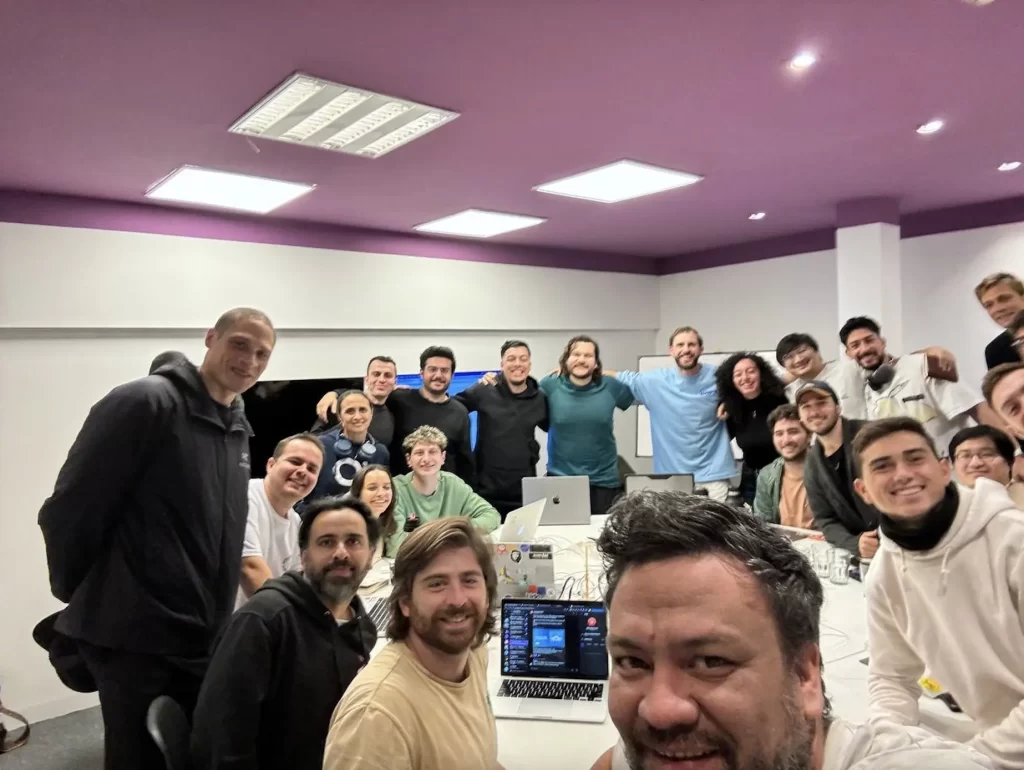
The offline event held by the-mu in Argentina, photo source: Sun
Sun shared an interesting story. He and his team visited Argentina for a site visit at the end of 2023, and the cost of a lunch in Buenos Aires was approximately 50 RMB; by March 2024 when they held the event, the price of a lunch had risen to 100 RMB; and by the end of 2024, the price had continued to rise to 130 RMB. Here, currency has long since lost its function as a measure of value.
Meanwhile, the official exchange rate is still displayed on the wall as a form of self-deception, while the black market exchange rate not only differs significantly from the official rate but is also eye-opening.
“Do you know we have seven or eight different exchange rates here?” Federico smiled helplessly, “Even when Coldplay came to give a concert, they managed to come up with a temporary exchange rate.”
He was referring to 2022, when the Argentine government did indeed introduce a special exchange rate policy for international concerts, with rates significantly higher than the normal rate, to address the severe devaluation of the peso and ensure that the event organizers received sufficient USD revenue. This is a country where the absurd has become routine.
In such an unreliable system, stablecoins like USDT and USDC began to emerge like icebergs floating to the surface. At first, people exchanged them secretly. Black-market dollars were unsafe, and even keeping them under the bed risked theft or destruction. Later, people discovered that wallet addresses on their phones might be a safer way to save money.
In 2024, Latin America became one of the fastest-growing regions for global crypto expansion, receiving over $415 billion in cryptocurrency, with its global share rising from 7.3% to 9.1%, with an annual growth rate of 42%. Among users who opened crypto apps in Latin America, 40% were from Argentina. In that year, Argentina’s total crypto asset transaction volume reached 91.1 billion USD, with nearly 10% of Argentinians using stablecoins monthly, and activity levels peaking at nearly 25%.
Local stablecoin platforms like Lemon Cash and Belo have emerged like mushrooms after rain, absorbing the nation’s disappointment with fiat currency.
“Our fiat currency is an extremely worthless memecoin,” Sun said, echoing the consensus among all Argentine Web3 entrepreneurs.
Argentinians have grown up resisting the government and financial system. For many young people, their first major decision after adulthood is not which university to attend or what career to choose, but how to prevent their money from continuing to devalue. They no longer wait for a better peso policy; they choose not to wait.
These young people have gradually established a new order. They still keep some pesos for daily small purchases, but for more expensive items like phones, computers, and rent, they directly use dollars and stablecoins for transactions. Life experience is forcing people to constantly seek the most feasible solution.
“If you walk around Buenos Aires, out of 10 stores, maybe two or three accept stablecoins.” Sun said, “You can also use Lemon Cash’s U Card, which allows you to spend stablecoins at almost all merchants.”
Lemon Cash is now Argentina’s largest centralized trading platform, with a peak of 5 million monthly active users and a low of around one or two million. In 2024, the platform processed a total transaction volume exceeding $5.9 billion for the entire year, with the fourth quarter alone surpassing $2 billion. The total amount of cryptocurrency deposits on the platform nearly doubled, with 78% of deposits being stablecoins. Behind this capital lies the choice of millions of people who have abandoned traditional banks and instead use stablecoins as their “digital piggy banks.”
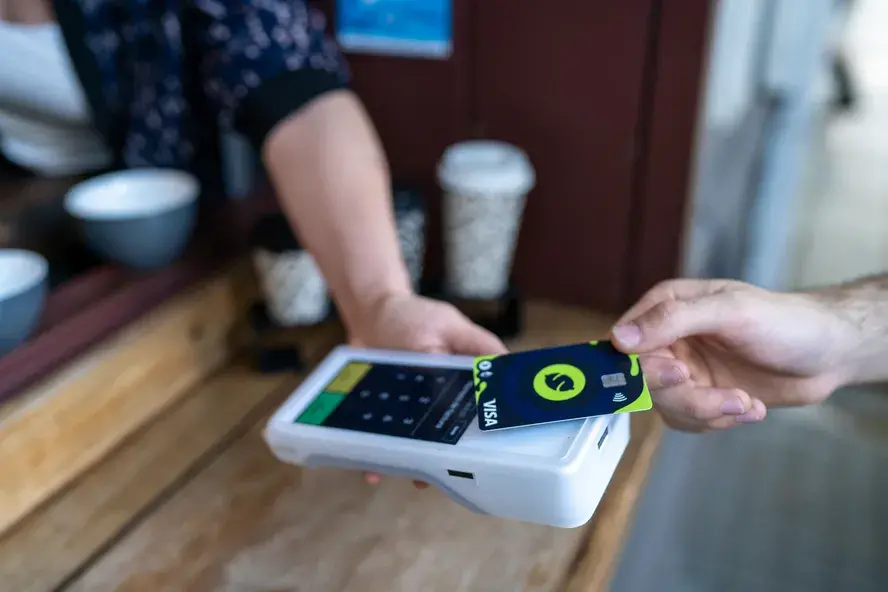
Users using Lemon Cash’s physical U Card, image source: Lemon Cash
You can see an elderly person carefully learning how to exchange on the Lemon Cash interface; a taxi driver asking colleagues in a group chat how to convert USDT into cash; and a high school teacher telling her students, “Storing USDT is safer than keeping paper money in a drawer.”
They use stablecoins for savings, transfers, and hedging against inflation; Lemon Cash has also integrated stablecoin investment features into its platform, and some users are beginning to explore the platform’s investment functions to earn annualized returns. Federico says he doesn’t have the nerve to try it, as past experiences with “high-interest scams” have made him wary of any investments.
Sun mentioned that a significant portion of the developers who drove the rise of DeFi protocols actually came from Argentina, such as the security team at OpenZeppelin, researchers at Lambda Class, and the “Head of Smart Contracts” at MakerDAO.
Now, their compatriots are using stablecoins to bring that financial ideal into real life.
“We’re not unwilling to trust the government; we’ve trusted it before, and the cost was too high,” Federico repeated during the interview.
That distrust collapsed completely after the Mileu memecoin incident. The new president, who was once seen as a symbol of hope in Argentina, was deceived into becoming involved in a cryptocurrency scandal. Although he quickly fired the involved personnel, public sentiment had already shifted irreversibly. The blockchain-friendly sentiments of the proud Pampas grassland natives have once again plummeted to freezing point. Web3 entrepreneurs have been forced back into the “underground,” with many now avoiding publicly identifying themselves as Argentineans to protect themselves and their families.
Nevertheless, stablecoins have slowly begun to penetrate the market. In Argentina, merchants have gradually started accepting stablecoin payments, particularly in young consumer-oriented scenarios. While it is not yet the mainstream payment method here, once people learn how to use it, it will become the most natural choice.
The peso remains the “legal tender” under the law, but in people’s daily lives, it has gradually been sidelined. It is no longer a measure of value but more like an obstacle that must be circumvented.
In this country where the government frequently defaults and the economy continues to decline, people have begun to use USDT to maintain their savings and build a daily life that is not dragged down by the economy. Their financial lives no longer depend on the state, or even on banks. Their trust has shifted from the state apparatus to individual blockchain addresses.
People no longer wait for the system to bring salvation; they have found their own way to survive. In an era where national currency has failed, crypto has become another form of trust.
Southeast Asia | Young People Connecting to the World Through Cryptocurrency
At six in the morning, Ho Chi Minh City is still shrouded in a thin mist. The street-side cafes have just opened, and the staff skillfully place QR code signs reading “USDC Accepted” on the counter, then wipe the moisture off the touchscreen with their sleeves.
Alex orders an Americano, stands by the counter, opens his Bitget wallet, scans the code, confirms, and pays—all in one fluid motion. He doesn’t carry a physical wallet and doesn’t ask about exchange rates; using USDC to pay is as natural as brushing his teeth or washing his face.
He is Ukrainian and has been traveling with his wife in Southeast Asia for the past year. From Chiang Mai to Bali, then to Kuala Lumpur and Ho Chi Minh City, they are always on the move. They belong to a borderless community of digital nomads. They don’t need a fixed address, but they must have a financial system that can cross borders and operate without restrictions. For Alex, that’s USDC.
“I don’t go to the bank,” he says calmly, as if stating an obvious fact. Payroll, daily expenses, and savings are all handled on-chain, unaffected by local banking systems and without the risk of account freezes. “My wallet is my true bank.”
This is not an isolated case.
Southeast Asia has a unique financial structure mismatch: bank cards have not penetrated the population, but QR code payments are ubiquitous.
In Indonesia, nearly half of adults don’t have savings accounts; in the Philippines, 44% of wage earners still carry their wages home in paper bags; and in Vietnam, credit card ownership is only 4%, with card payments still a rarity for most. Yet QR codes on mobile phones have already become the dominant payment method, from street vendors to massage parlors and bubble tea shops—almost everyone is accustomed to scanning codes.
Indonesia’s national QRIS payment network has covered over 32 million merchants in just a few years, with over 50 million users and an annual transaction growth rate of 226%. The Lowy Institute describes this wave as “from night market skewers to tuk-tuk taillights, payments are completed silently.”
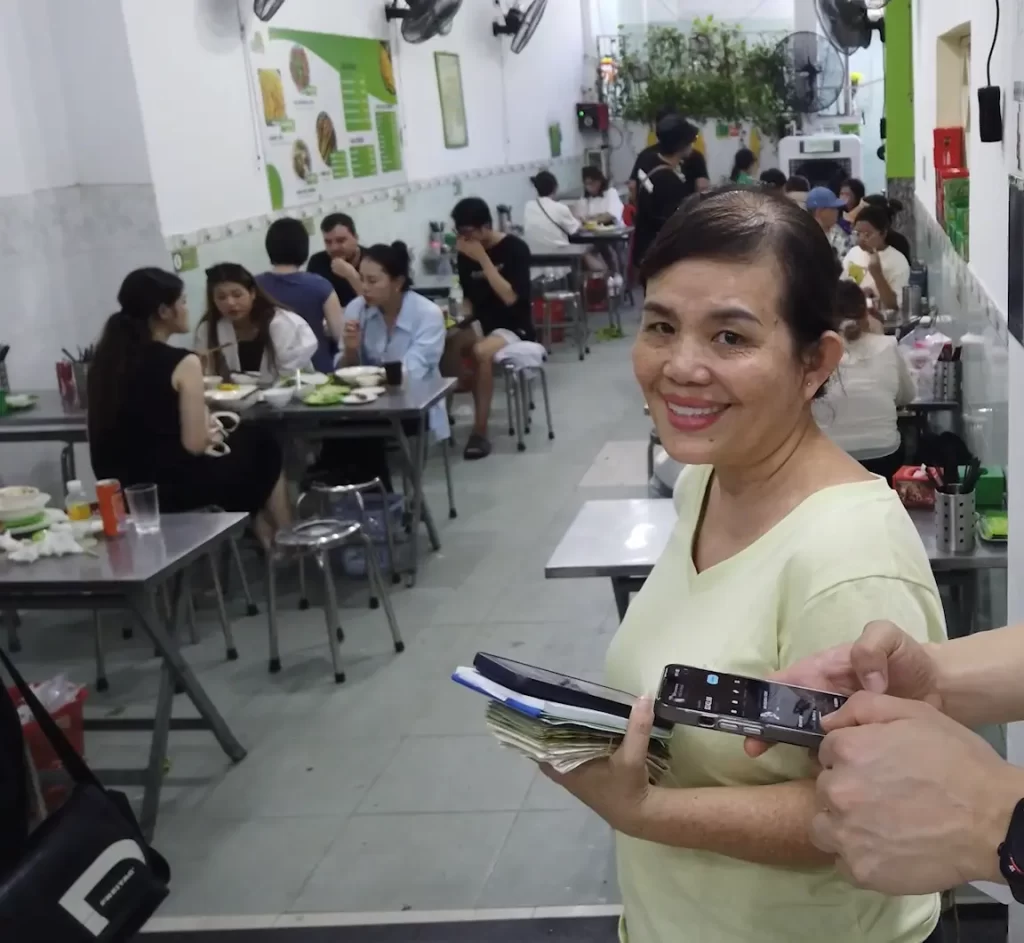
Using stablecoins for offline payments in Vietnam, image source: Bitget Wallet
This reality, where “card payments are difficult to popularize but QR code payments are widespread,” provides a natural entry point for stablecoins.
Bitget Wallet is one of the earliest pioneers to explore this path. They partnered with locally licensed fiat currency exchange providers to establish a comprehensive backend settlement mechanism: users scan codes to make payments at the front end, while the backend simultaneously completes the conversion and settlement of stablecoins into local fiat currency in real time. Karry, CEO of Bitget Wallet, stated, “Within less than two weeks of launch, we were already processing thousands of transactions daily.”
Many of these stablecoin users are not even “crypto traders.”
Kari, a video editor based in Bangkok, primarily works with clients from Europe and the US. She previously used Wise or SWIFT for payments, but after her account was frozen for three days due to risk control measures, she switched to using USDC. “I don’t understand blockchain, but I know stablecoins are convenient and don’t require dealing with platform disputes,” she said.
Q is another digital nomad who has been living in Chiang Mai for years. She used Infini’s U Card for everything: dining, ride-hailing, hotel bookings, and even grocery shopping. It wasn’t until Infini ceased operations that she realized she had already staked her entire lifestyle on this “on-chain-to-offline” payment system.
“I’m still looking for an alternative card,” she said.
She visited several local currency exchange points in Chiang Mai, noticing signs for “USDT/USDC exchange” on the counters and WeChat and Alipay listed among payment options. However, the exchange rate was unfavorable, with USDT to Thai baht at 32.6. Still, she was willing to exchange, saying, “The process is much simpler than at a bank.”
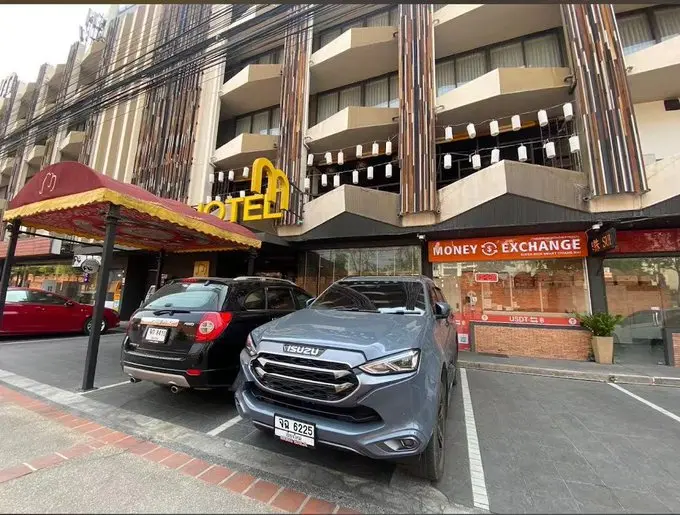
Local stablecoin exchange points in Chiang Mai; Image source: Q
She added with a smile, “My friends and I split the bill when we eat out, using USDC transfers. That counts as a form of stablecoin payment, right?”
These details seem to piece together a shadow financial system. It doesn’t rely on banks, doesn’t require credit history, and bypasses regulatory narratives and definitions. Those who use it are freelancers, workers, tourists, and vendors, who build their own financial lives using a series of on-chain addresses.
This “invisible infrastructure” may be the true form of mass adoption.
Regulators have also noticed the direction of the tide. In 2023, the Monetary Authority of Singapore introduced a stablecoin compliance framework, explicitly requiring a 1:1 reserve ratio, a redeemable mechanism, and transparent audits. At a peculiar moment, public demand and official policy began to converge in harmony.
Across Southeast Asia, the adoption of stablecoins has never been something to wait for—it has already quietly permeated every corner of daily life: a wage remittance, a meal split payment, a cash exchange transaction. For young digital nomads, it is the foundational asset system enabling free migration; for local freelancers and blue-collar workers, it is the optimal solution for remittances, savings, and payments.
These people may not know what blockchain is, nor do they necessarily care about regulatory developments. But stablecoins have already permeated their daily lives, seeping in like water through the cracks of life.
Africa | Young people abandoned by the banking system
“We paid for the animal migration tour directly with stablecoins.”
Joy recalled her recent journey on the other end of the screen.
She is a Chinese entrepreneur doing business in Africa. She explained that when doing business here, USD transfers take too long, and using RMB requires a cumbersome currency exchange process.
Joy spent five minutes teaching the travel agency how to receive stablecoins via a wallet. Once the USDT was sent, it arrived in just a few seconds. Then, during the trip, they immediately began providing various services.
“Many people already know about this,” she said with a smile, ‘they just don’t know how to start.’
In Africa, such ‘firsts’ happen every day. According to Chainalysis statistics, in the past year alone, 43% of on-chain transactions in sub-Saharan Africa came from stablecoins, offering alternatives that were previously excluded from the system.
This continent is vast and young. According to UN data from 2025, the median age in Africa is 19.3 years old, with 60% under 25 years old. However, on the map of the financial system, it remains thin and blurry. Out of 54 countries, 33 are classified by the UN as “least developed countries.” For many here, a “bank account” is not the starting point of finance but an insurmountable barrier.
You need identification, a fixed address, stable income, and credit history—all of which are out of reach for most people.
So they shifted direction, carving out their own financial system through the cracks.
Stablecoins are not high-concept cryptocurrencies but rather blunt yet reliable tools. They provide young people on this continent with the ability to receive, save, and spend money. Nigeria is a microcosm of this trend. Over the past year, cryptocurrency transaction volumes reached $59 billion, with 85% of these transactions being small-scale remittances of less than $1 million—each one a fragment of daily life.
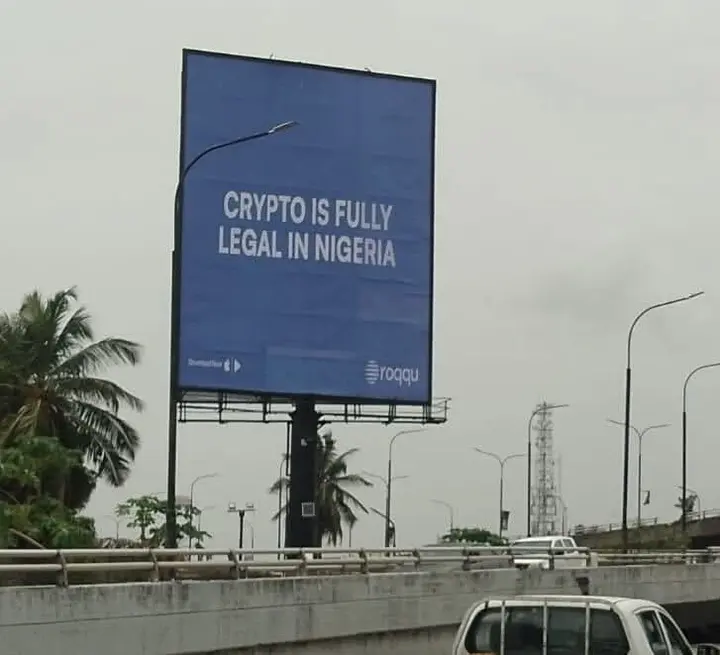
Billboards in Nigeria, image source: Martin
Joy is the founder of Gimlet, a stablecoin payment platform. They have built an on-chain settlement system for local merchants. B-end customers pay with USDT, and merchants receive payment within seconds after confirming the order, which is significantly faster than before.
She spoke calmly, as if describing a routine metric improvement. Yet one could sense the relief behind her words—the sudden controllability of what was once a stagnant flow of funds.
“When you travel in Africa and drink coffee, you occasionally come across small shops accepting cryptocurrency payments,” she said. “It’s not yet widespread, but it’s far more common than a year ago.”
Currently, most of the merchants accepting stablecoin payments are medium to large-sized businesses, or hotels, travel agencies, and wholesalers that frequently deal with cross-border customers. Not everyone is using it yet, but you can see the system gradually infiltrating the edges of daily life. It’s no longer “novel,” just not yet “ubiquitous.”
Joy recalled that when her company was hiring locally, many highly educated young people would proactively ask, “Can we be paid directly in USDT?” On one hand, it’s to combat inflation, and on the other, it’s for tax avoidance. In their upbringing, banks and modern finance have never truly been on their side. It’s not surprising, as 70% of African countries face foreign exchange shortages, and sometimes even businesses have to wait weeks to exchange dollars for machinery. Being able to directly accept stablecoins has become a more reliable option. According to Michael, the founder of Interlace, banks in many developing countries typically allocate a monthly dollar quota to businesses. When these quotas are insufficient, many companies opt to exchange local currency for USDT through over-the-counter channels.
Tether CEO Paolo Ardoino stated at the 2025 Bitcoin Conference: “They have been abandoned by the traditional financial system.” This statement is not an exaggeration.
Western Union charges 10%–15% and can take several days to process; bank wire transfers, though seemingly professional, often require additional verification, local intermediaries, and clearing agents, with unpredictable arrival times and frequent disruptions.
“The banking system over there is pretty exclusive,“ Martin said, sounding helpless as he recounted his colleague’s experience. ‘The account was frozen without warning, and to unfreeze it, they had to pay a ’protection fee.’ This has been going on for years.”
Martin is Noones’ representative in China. This cryptocurrency trading platform, which supports various payment methods including gift cards and bank transfers, has rapidly accumulated a large user base in Nigeria and Ghana in recent years.

Noones at an African exhibition, photo source: Martin
In contrast, stablecoin transfers on the blockchain are fast, cheap, visible, and verifiable. According to data calculations, transferring $200 from sub-Saharan Africa using stablecoins can reduce costs by approximately 60%. That crypto wallet is the first account that truly belongs to many people in their lifetime.
However, only a small portion of young people engage in cryptocurrency trading. Most are not eager to use stablecoins for on-chain ventures. Joy noted that after receiving USDT, most people simply hold onto it. They do not participate in DeFi, engage in wealth management, or take risks.
“They only recognize the Tron chain and mostly use USDT,” Martin said with a smile when discussing the platform users’ habits. ”They’ve never even heard of Solana or TON. Among mainstream cryptocurrencies, they only know Bitcoin; even Ethereum isn’t popular among them.”
They have experienced how inflation can turn cash into worthless paper in just three months, with stocks, bonds, and gold out of reach. For them, stablecoins that preserve value and don’t depreciate are already top-tier options.
“They only make small transactions, with amounts rarely exceeding a few hundred USDT. A thousand USDT is already a significant sum, almost equivalent to a family’s monthly living expenses,” Martin said.
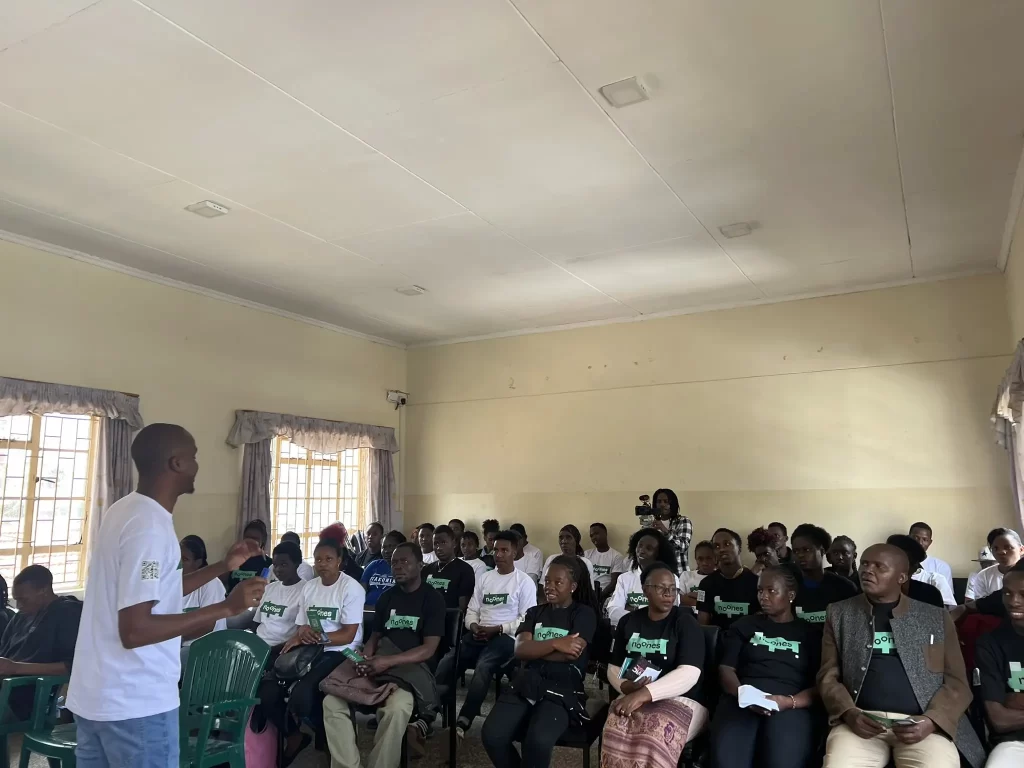
Noones held an offline presentation in Nairobi, the capital of Kenya. Image source: Noones Africa
The total trading volume of stablecoins across the entire African continent has exceeded $30 billion, with an adoption rate of 9.3% in sub-Saharan Africa. This is a future that is already unfolding, not just a vision of the crypto community.
In cross-border trade, stablecoins have become the default tool for an increasing number of Chinese companies doing business in Africa. They offer high payment efficiency, avoid currency exchange challenges, and eliminate the uncertainties associated with intermediaries. At the 2025 China-Africa Economic and Trade Expo, 176 cooperation projects were signed, totaling over 11.3 billion USD. This systemic flow of funds is essentially creating use cases for stablecoins. Joy believes that once Hong Kong dollar stablecoins are launched, they will quickly gain traction in Africa.
Cryptocurrency is rewriting the map of African finance. Nigeria has risen to second place globally in adoption indices, with Ethiopia, Kenya, and South Africa also ranking in the top 30. The adoption of stablecoins in Africa is beginning to show signs of growth. Joy says, “Once the 2027 elections arrive and inflation gives it another push, stablecoins will enter the daily lives of more people.”
In Africa, money hasn’t left them; instead, banks have disappeared from their lives. There are no counters, no receipts, no credit history. These people have never belonged to the traditional financial system, but this time, the system has shifted to accommodate them. Here, not everyone understands cryptocurrency, but an increasing number of people are using stablecoins to receive wages, save living expenses, and bypass banks.
Epilogue | The form of money is slowly changing on the other side of the world
In our daily lives, money is a line of numbers on a bank app, the sound of a scanner at the checkout counter, or a text message when wages are deposited.
But in a broader world, “money” is often absent—it’s the closed doors of Western Union, the only bank branch within dozens of kilometers, or the fans that can’t be waved and the sun-cracked skin in long queues.
Stablecoins like USDT and USDC are not just code and consensus; they are like wooden boats carrying people across the river in the midst of a monetary storm.
One day, you might encounter receipts like these around the world:
“3.7 USDC Received” flashing on a QR code lightbox at a Vietnamese street corner;
“0.85 USDT Confirmed“ reflected in the silhouette of a Kenyan coffee cup;
”Rent Paid 350 USDT” written on a memo in an Argentine shared apartment.
These numbers quietly redefine the meaning of ‘money.’ They replace the president’s portrait on currency with hexadecimal codes and shift trust from paper currency ink to the blockchain.
Stablecoins quietly catch those left behind by traditional finance. Countless people complete countless small payments with their fingertips, piece by piece, day after day, assembling the financial system of the future.
The form of money, on the other side of the world, is quietly changing.
